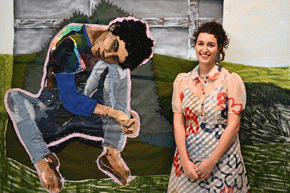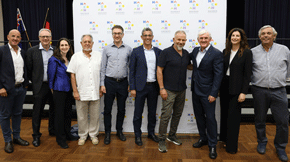Grosvenor was generous and brilliant: a music review by Fraser Beath McEwing
If ever there was a piano recital worth queuing up for it was the one given last night by young English pianist, Benjamin Grosvenor.

Fraser Beath McEwing
There was no queue, unfortunately. That seldom happens in this town, even for bankable stars like Lang Lang or Murray Pariah who get gigs at the Opera House concert hall. It is rare to see the Sydney City Recital Hall full, even for the likes of Stephen Hough or Yuja Wang.
That didn’t deter my keenness to hear Benjamin Grosvenor, one of the best classical pianists to emerge from Merry England in the last twenty years. I heard him in Carnegie Hall last year when he precisely dispatched a Mozart concerto under the baton of the fraffly English Sir Roger Norrington.
For his Sydney solo recital Grosvenor methodically climbed the time ladder, beginning with Bach, then up successive rungs up to Mozart, Chopin, Granados and reaching the summit with Ravel. Even the hardest-to-please concertgoer would have found true love somewhere in that lot. But more importantly, it showcased Grosvenor’s remarkable technique and his skill as an eclectic interpreter.
Benjamin Grosvenor doesn’t look like an English concert pianist who might attract a caricature: no barbaric hair or evidence of an experimental tailor. He’s neat, maybe a little military in his demeanour. He sits upright and non-emotive at the keyboard, all of which positions his playing, rather than his appearance, at the forefront of the concert experience.

Benjamin Grosvenor
He began with Bach’s French Suite No.5 in G major, BWV 816, a collection of 18th Century inspired dances with French names, but musically, typically Teutonic Bach. Grosvenor’s clear enunciation and minimum use of pedal gave the suite a three dimensional effect in which each of the seven dance movements lived a clearly defined life. The test of good Bach playing is to promote separate voices from within the matrix and in this, Grosvenor was masterful.
The popular Piano Sonata No.13 in B flat major, K.333 by Mozart followed. Commentators have likened it to a piano concerto where the orchestra didn’t turn up. Consequently it is more technically demanding
than many of Mozart’s other sonatas. This suited Grosvenor’ technique as he shaped the phrasing without having to compromise.
These two opening pieces led into a calm interval, but with romance and starbursts in prospect for the second half. It opened with a Chopin favourite, Barcarolle in F sharp major, Op.60. While Chopin went back to his well of favourite forms many times over, he only ever drew up one barcarolle. Initially imparting the swaying ride of a gondola, the barcarolle quickly develops into a more bravura work – which is how Grosvenor presented it. On balance I’d prefer a more poetic rendition, but judging by audience reaction I was in a minority.
Turning to the Spanish idiom, Grosvenor chose two of the pieces from Goyescas by Granados: Los requiebros andQuejas ó La maja y el ruiseñor. The latter, translated as ‘The Lover and the Nightingale’, is the most popular. The full cycle of Goyescas takes nearly an hour to play and is seldom heard in its entirety but it only took these two to show Grosvenor’s simpatico for Spanish music, with its plethora of tricky ornaments and lightening key changes.
Finally, to Ravel. When Balakirev composed Islamey, it became arguably the most technically difficult piano piece ever written. “Harrumphf!” snorted Maurice Ravel, grabbing some manuscript paper. “We’ll see about that.” Well maybe that’s not quite how it happened, but Ravel definitely toppedIslameywith Gaspard de la Nuit, a ‘suite of three poems according to Aloysius Bertrand’. Not only is it more difficult to play, the battle rages for more than 20 minutes producing, along the way, some of the most spectacular and sublime piano music imaginable – especially for those who like French impressionism.
Few pianists are game to tackle Gaspardin a live concert. It requires the riskiness of youth, fiery passion, romance and an Olympian technique. Grosvenor had all of those, plus a way of conveying French impressionism with mysteriously soft, colourful brushes. I’ve heard many outstanding pianists tackle this rodeo ride, but Grosvenor’s take on it was disarmingly unique.
This was the final concert in the International Pianists in Recital series and while there has been some superb playing, Grosvenor stood out for me as the pianist who is able to switch genres with astounding authenticity and hands that seem to have no limitations.








